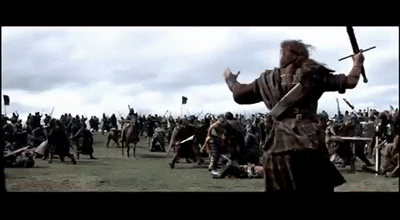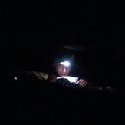|
A Buttery Pastry posted:I'm now imagining someone settling on using 20th century Roman tactics to explain Roman military history during the Roman Republic. "Why doesn't this account of the battle of actium mention ironclads?"
|
|
|
|

|
| # ? Jun 2, 2024 14:12 |
|
New entry in "making up a guy to get mad at:" Guy so committed to monarchism that he insists Rome fell in 509BCE.
|
|
|
|
[looks outside to see my rapist son fleeing a bourgeois revolution] "dang shoulda bought all 9 books and got a heads up on this"
|
|
|
|
Tulip posted:I mean, they did. We have literary and artistic sources from the Romans themselves that they did fight in shield wall formations, and the medieval shield walls that people associate with Germanic armies were used by Romans before. No we don't. There's art of Roman soldiers standing near each other, but that's not what a shield wall is. The only literary source that actually talks about the infantry says that they stood a little distance apart from each other Slim Jim Pickens has issued a correction as of 22:43 on Mar 1, 2023 |
|
|
|
skooma512 posted:re: Sword chat Is there a decent source for this? I see something like it bandied around a lot but in my experience more often than the immune system does OK at fighting off infection so I've always thought it was a bit exaggerated. Although of course still a serious concern.
|
|
|
|
they should have just used the artillery that caesar nicholas II used in ww1
|
|
|
Tulip posted:The canonical war for "The Romans beat the phalanxes," the Macedonian Wars, had multiple battles where the legions got their asses utterly kicked by the Macedonian phalanxes. The Roman Legion was not nearly so much a man-for-man improvement over phalanxes (see: the Romans transition to pike formations during the Crisis of the 3rd Century), but that the Roman legal, social, and recruitment systems meant that they only had to get lucky once to take a Hellenistic state out of commission. i don't subscribe to the Macedonian Wars as an example of romans solving how to dissolve phalanxes; a Macedonian phalanx was kitted out in full Alexander gear with sarissas & such, and had been drilled intensively. they didn't have the weaknesses that roman tactics of the republican era were designed to exploit. but people other than hellenic states used blocks of spear guys, it was the dominant military system in the entire mediterranean, and most people were not as good as the greeks and macedonians at structuring their societies around it. baby's first phalanx was a formation that made you at least competitive against other people on the same level, and that is the status quo that the romans came into and demolished in the west. the east was very different Jazerus has issued a correction as of 02:58 on Mar 2, 2023 |
|
|
|
Well if nothing else I'm pleased my ignorance has triggered a stimulating discussion of Roman infantry formationsReal hurthling! posted:[looks outside to see my rapist son fleeing a bourgeois revolution] "dang shoulda bought all 9 books and got a heads up on this"  I genuinely laughed aloud I genuinely laughed aloud
|
|
|
|
|
Weka posted:Is there a decent source for this? I see something like it bandied around a lot but in my experience more often than the immune system does OK at fighting off infection so I've always thought it was a bit exaggerated. Although of course still a serious concern. There's also sources going back as far as Sumerian city-states that talk about mustard poultices being used to prevent wounds from going bad. Mustard is the earliest known domesticated spice and people figured out before writing that it (and also that honey) prevent infection, even if they didn't know what infection was all about.
|
|
|
|
kinda sucks that alcohol distillation was such a late development. it could have easily become a worldwide phenomenon at the same time as iron production
|
|
|
|
Weka posted:Is there a decent source for this? I see something like it bandied around a lot but in my experience more often than the immune system does OK at fighting off infection so I've always thought it was a bit exaggerated. Although of course still a serious concern. Well, "likely" is doing a lot of work here. Wounds can get infected, it's not rare, and if it's a big wound or a nasty infection you can easily die without antibiotics. But people in historic times did know about and use some antiseptics to some degree, so it's not like they couldn't do anything about it at all. And most people who got a simple cut on the leg or something like that certainly did survive it. Even if it does get infected, that's not a death guarantee, many people survive. But dying of it was much more likely than it would be nowadays.
|
|
|
|
Slim Jim Pickens posted:No we don't. There's art of Roman soldiers standing near each other, but that's not what a shield wall is. The only literary source that actually talks about the infantry says that they stood a little distance apart from each other They had the testudo, so they were very well aquainted with the concept of bringing their shields in close order. Given that we hear about nonstandard deployments for legionaries plenty of times, them using a shield wall is entirely plausible. For example at Pharsalus Caeser deploys 1000 legionaries with their pila to be used as thrusting spears to surpise pompey's cavalry. At Zama Scipio deploys the legion with large gaps between maniples to let Hannibal's elephants pass between more easily. And up until the marian reforms, the Triarii fought as hoplites. So if it was a tactical benefit, there is no reason to imagine the legions not using it. Maybe they are defending a tight space, or are worried about arrows so they form more soild defenses. The standard deployment as best we know is as you said, and their equipment is designed for individual combat. thats why the scutum is so curved, to cover more lines to the user. they are not designed like the hoplon to cover their neighbor WoodrowSkillson has issued a correction as of 07:57 on Mar 2, 2023 |
|
|
|
The thing is, people mischaracterize the standard deployment of the Romans as a shield wall all the time, because of... idk just lack of information? Reenactors deploying in testudo all the time? I just think people should be taught more often that the primary sources for the ancient world are absurdly incomplete, and half the history written them was made up coked up Victorians
|
|
|
|
frescoes also like to cram people really closely together
|
|
|
|
its the testudo thing. its the only impressive thing reenacters have got. throwing tragulae is a pretty cool act too but only a couple guys are probably allowed to do that in public and you gotta know how to bugle to blow the tuba its not like civil war guys that get to fire a huge cloud out of their rifle
|
|
|
|
Frankly I'd rather have people expect a shield wall when there wasn't one vs the Hollywood stereotype of all battles from every time period being a confused melee with no formations.
|
|
|
|

|
|
|
|
Slim Jim Pickens posted:No we don't. There's art of Roman soldiers standing near each other, but that's not what a shield wall is. The only literary source that actually talks about the infantry says that they stood a little distance apart from each other JE Lendon, Soldiers & Ghosts, 2006. It's Chapter 12. Jazerus posted:i don't subscribe to the Macedonian Wars as an example of romans solving how to dissolve phalanxes; a Macedonian phalanx was kitted out in full Alexander gear with sarissas & such, and had been drilled intensively. they didn't have the weaknesses that roman tactics of the republican era were designed to exploit. but people other than hellenic states used blocks of spear guys, it was the dominant military system in the entire mediterranean, and most people were not as good as the greeks and macedonians at structuring their societies around it. baby's first phalanx was a formation that made you at least competitive against other people on the same level, and that is the status quo that the romans came into and demolished in the west. the east was very different Alright, we're largely on the same page. I'm used to people citing specifically Pydna as evidence that the Roman legion was just always capable of trivially dismantling Hellenistic phalanxes, and I think that the primary sources we have are pretty clear that the Romans were frequently frustrated in their attempts to take the pike formation apart directly. I tend to view the Pyrrhic Wars (and the attendant Pyrrhic victories) as more emblematic of where Rome's strengths were relative to their often larger neighbors during the republic. I suppose the way I see it is that the dominant question about high-quality heavy infantry is "do you have it y/n." If you do have it, kit and tactics is less important than sustainability and control.
|
|
|
|
Hellenistic successor states did mimic the Romans in terms of infantry equipment almost perfectly with the Thorakitai and Thureophoi, but they lacked the important social infrastructure to field them in the same numbers and at the same level of training.
|
|
|
|
Tulip posted:JE Lendon, Soldiers & Ghosts, 2006. It's Chapter 12. That's explicitly from after they switched away from the scutum. The Rome of 357 AD is also just not what the average person thinks of when Rome comes to mind. Endman posted:Hellenistic successor states did mimic the Romans in terms of infantry equipment almost perfectly with the Thorakitai and Thureophoi, but they lacked the important social infrastructure to field them in the same numbers and at the same level of training. The successor states had demographic issues because of the way Alexander swallowed up the Achaemenid empire over a few years. The Ptolemies in particular couldn't really stomach empowering the native Egyptians and so were constantly looking for other ethnicities to invite over to serve as soldiers or police. They settled a bunch of Galatian Gauls in Fayyum for example, and leaned on Jews a lot for various civil services, as well as being soldiers.
|
|
|
|
Tulip posted:Alright, we're largely on the same page. I'm used to people citing specifically Pydna as evidence that the Roman legion was just always capable of trivially dismantling Hellenistic phalanxes, and I think that the primary sources we have are pretty clear that the Romans were frequently frustrated in their attempts to take the pike formation apart directly. i don't think anybody's saying that. like, it should be p obvious that you just don't beat a disciplined phalanx that's fighting in suitable terrain head-on except with another better phalanx e: hell, if you jump ahead some 1500 years they basically ended up drawing the same conclusion with push of pike Cerebral Bore has issued a correction as of 10:02 on Mar 3, 2023 |
|
|
|
Endman posted:Hellenistic successor states did mimic the Romans in terms of infantry equipment almost perfectly with the Thorakitai and Thureophoi, but they lacked the important social infrastructure to field them in the same numbers and at the same level of training. Would you care to expand on this? Looking at wikipedia they used a thrusting spear and just seem like heavy skirmishers or light phalangites.
|
|
|
|
Weka posted:Would you care to expand on this? Looking at wikipedia they used a thrusting spear and just seem like heavy skirmishers or light phalangites. They were much like the Roman Triarii and Principes of the Pyrrhic Wars; both classes carried spears. It's reasonable, but obviously without much evidence, to assume that the experience of Epirus in that war taught the Hellenistic world the usefulness of Roman-style infantry, since they seem to appear at roughly the same time. Essentially, like the Roman soldiers, they were equipped in such a way that allowed looser formations, rather than the tightly packed Phalanxes of the Alexandrian and earlier Hoplite periods.
|
|
|
|
Cerebral Bore posted:i don't think anybody's saying that. like, it should be p obvious that you just don't beat a disciplined phalanx that's fighting in suitable terrain head-on except with another better phalanx Yeah the actual reason the legions "countered" the successor phalanxes was a combination of factors. The successor states waged nearly endless war on each other basically from the moment Alexander died. Over the years their ability to train pikemen the way Alexander did waned. To compensate, they started giving their phalangites longer and longer pikes, with some of the biggest being something like 24 feet long, compared to the ones alexander was using that were ~18ft. This was to shove even more spearpoints at the front of the phalanx. However they were even bigger and heavier than the prior ones, and in general their men were less well trained. Alexander's guys could do things like rapidly rotating the entire formation, reacting to flanking attacks by spinning the guys on the side to create another spearwall, etc. The successor states just did not have armies of the same flexibility and skill. They also had far fewer light troops, instead favoring more and more pikes, since most of the time they were fighting each other. So by the time of the wars with the Romans, they were fielding outdated, poorly trained, and cumbersome pike blocks compared to Alexanders mobile and highly trained combined arms army. Pydna is emblematic of the overall problems the successor states had against the Romans. They won the first part of the fight, the straight up contest in the front line. But their cavalry did not do their jobs, and once the line began to move as the romans retreated in order, the pike blocks got out of alignment and the legions seized on it. The Romans took pride in allowing field officers to make decisions, and when gaps were noticed, centurions immediately had their guys charging in and causing a ruckus. The Successor states did not have the training of Alexander's troops and once the legions were actually in sword range, it got out of control fast. The legions essentially were able to use the rope-a-dope on the successor states and not take too many losses even in defeats, and as soon as the opportunity allowed they struck. Their equipment does factor in here as their big rear end shields and armor allowed them to not take too many losses even when wading into the pikes, and their discipline and training allowed them to do things like make ordered retreats and adjust on the fly. The legions were not some perfect counter to the phalanx, and if they had been up against armies of the caliber Alexander was fielding it would have been a very different story, likely with the Romans having to put their own pike blocks into play. Endman posted:They were much like the Roman Triarii and Principes of the Pyrrhic Wars; both classes carried spears. It's reasonable, but obviously without much evidence, to assume that the experience of Epirus in that war taught the Hellenistic world the usefulness of Roman-style infantry, since they seem to appear at roughly the same time. Essentially, like the Roman soldiers, they were equipped in such a way that allowed looser formations, rather than the tightly packed Phalanxes of the Alexandrian and earlier Hoplite periods. Principes used the gladius and scutum like the hastati did. They had the better armor and were veterans. The Triarii were the only ones still using the hasta in the polybian legions. All this despite the hastati being named after the goddamn spear, essentially meaning "spearman"
|
|
|
|
yeah the way to put it is that maniples & the associated gear were an excellent counter to phalanxes as fielded by most militaries of the era in practice, but are not some kind of perfect counter to the concept of the pike block; the "trick" only works if the target is poorly trained, geared, or commanded, and thus gets lured into a situation where the block formation dissolves. it's just that assuming the target is poorly trained, geared, or commanded compared to Alexander's army is a pretty decent bet, and while you don't quite have to be on Alexander's level to render the legions much less dangerous, you do have to be at least competent on a command level and have the time to drill and the money to properly equip your dudes.
|
|
|
|
|
Cerebral Bore posted:i don't think anybody's saying that. like, it should be p obvious that you just don't beat a disciplined phalanx that's fighting in suitable terrain head-on except with another better phalanx I don't want to put the words in the mouths of any goons, but it is a common pop history conceit, to the point where the wikipedia summary for the battle of pydna says Wikipedia posted:The battle is also considered to be a victory of the Roman legion's manipular system's flexibility over the Macedonian phalanx's rigidity.[2] Slim Jim Pickens posted:That's explicitly from after they switched away from the scutum. The Rome of 357 AD is also just not what the average person thinks of when Rome comes to mind. Yes my whole point is that they did move away from the scutum. That is in fact the core statement I am making about the course of Roman military equipment. They used the scutum for a period, and in other periods they used other gear. The most common pop history date for the end of Rome 476 CE, and when you say "the average person" kind of the whole point of this sentiment (that I agree with) Slim Jim Pickens posted:The thing is, people mischaracterize the standard deployment of the Romans as a shield wall all the time, because of... idk just lack of information? is that people tend to flatten the past into a series of crude stereotypes that overlap in contradictory ways. "Ancient Rome lasted from 753 BCE to 476 CE" and "Ancient Rome only fought with a scutum" are not historical beliefs that can coexist with the broadly agreed upon facts. If you want to make an argument that people are wrong to believe that Rome survived the crisis of the 3rd century then I mean go for it you'll probably get some pushback (including from me), but its not as overtly wrong as trying to say that the Romans were fighting in the consular style during the late period. I can understand the desire to not talk about pre-manipular Roman armies, because man the sources get thin, but kind of the whole thing I'm pushing for is that people are being too narrow-minded and conservative about "trve rome" and this often leads to either contradictions or outright silliness (like claiming that all Romans were white, which, come on). One of the places where the fluidity, flexibility, and adaptability of Rome is really on display is the ways in which the legions continued to change over time and adopt new tools and tactics as the diplomatic, technological, and economic situation of the state they were defending changed.
|
|
|
|
WoodrowSkillson posted:Principes used the gladius and scutum like the hastati did. They had the better armor and were veterans. The Triarii were the only ones still using the hasta in the polybian legions. All this despite the hastati being named after the goddamn spear, essentially meaning "spearman" They used spears until some point in the Punic Wars, at which point they switched to the gladius + pila. The exact point at which the switch in arms occurred isn’t really clear (around 250BCE) but it’s probable that during the Pyrrhic War Principes were equipped with spears.
|
|
|
|
Tulip posted:(like claiming that all Romans were white, which, come on)
|
|
|
A Buttery Pastry posted:When in fact none of them were. [inarticulate Italian noises]
|
|
|
|
|
they all pretended to be 1/16th turkish the principate was a cult of ancient liz warrens
|
|
|
|
A Buttery Pastry posted:When in fact none of them were. Unironically this, because whiteness hadn't been invented. Endman posted:Essentially, like the Roman soldiers, they were equipped in such a way that allowed looser formations, rather than the tightly packed Phalanxes of the Alexandrian and earlier Hoplite periods. Thank you, looking at it in terms of function rather than form makes your point clearer.
|
|
|
|
Real hurthling! posted:they all pretended to be 1/16th turkish I thought snake cults were more of an Egyptian thing
|
|
|
|
Weka posted:I thought snake cults were more of an Egyptian thing Romans had that snake puppet Alan Moore worships
|
|
|
|
guy who insists that there were no black people in Ancient Rome but bc he doesn’t consider Ethiopians black on account of speaking a Semitic language
|
|
|
|
https://twitter.com/MoodyKnowsNada/status/1338890623311601664
|
|
|
|
Millions of years ago, before there were beasts, bacteria or any living organism, there were RNAs. These molecules were probably swirling around with amino acids and other rudimentary biomolecules, merging and diverging, on an otherwise lifeless crucible of a planet. Then, somehow, something special emerged: a simple machine, a pocket made of RNAs, with the ability to place amino acids next to one another and maybe link them into chains. This was the macromolecule that would gradually evolve into the ribosome, the RNA–protein complex responsible for translating genetic information into proteins. Its birth — the details of which remain hypothetical — would have created a fundamental shift in this prebiotic, RNA-dominated world, providing a key ingredient to all life as we know it. Ada Yonath, a structural biologist at the Weizmann Institute of Science in Rehovot, Israel, and her team first conceptualized this ‘protoribosome’ idea nearly two decades ago, after she and others determined the structure of the modern ribosome, a feat that later secured Yonath a share of the 2009 Nobel Prize in Chemistry. But to solidify the case for the hypothetical protoribosome, Yonath and her laboratory would have to build it. It’s a project that other scientists have watched with interest. And the lab’s achievements in the past two years — creating a primitive RNA machine that can link two amino acids together1,2 — have created a ripple of excitement. A group in Japan, working separately and led by molecular biologist Koji Tamura at the Tokyo University of Science, has succeeded in creating a similar, functional protoribosome3. “It’s strongly supportive of Ada’s protoribosome idea,” says Paul Schimmel, a biochemist at Scripps Research in La Jolla, California. “I’ve always had an open mind; the open mind is becoming a more convinced mind.” Although doubts and caveats remain, Yonath’s and Tamura’s work seems to recapitulate a milestone on the road from primordial organic molecules to the ribosome used by the last common ancestor of all living things. This was no simple task: In Yonath’s group, the project was passed from researcher to researcher and took more than 15 years to succeed. The work has now opened the door for origin-of-life scientists to fill in further details. And others are looking at the protoribosome, or something like it, as a tool to create new kinds of biomolecule. “This should be a starting point of many more fields of research,” says Tanaya Bose, a postdoctoral researcher who has led the Yonath group’s efforts for the past several years. Scientists have been attempting to recreate some semblance of the chemical origin of biomolecules for decades; it was 70 years ago that Stanley Miller, a chemist at the University of Chicago in Illinois, sparked a gas mixture to create organic compounds4. Researchers including Carl Woese and Francis Crick suggested the ribosome could have started as a molecule made solely of RNA, an idea that was supported 40 years ago with the proof that RNAs can catalyse reactions5,6. This led to the ‘RNA world’ hypothesis, which describes a time, before cells or actual life, when RNAs replicated and catalysed reactions7. The RNA-world idea has come into doubt in the past decade; many scientists now suspect that a variety of biomolecules, including rudimentary proteins, lipids and metabolites, might have existed together with nucleic acids. Yonath suspects there were plenty of RNAs on early Earth. “Most of them don’t exist any more because they were small and not useful.” The protoribosome, she says, was the one that lasted. Yonath and her colleagues published high-resolution structures for the two protein–RNA subunits that make up a ribosome in the early 2000s8,9. These examples came from extremophile bacteria. And as ribosomal structures from other organisms were published, Ilana Agmon, a scientific adviser in Yonath’s group, noticed something that she found striking. Deep in the core of the large subunit was a semi-symmetrical segment. This region contained a pocket-like structure, made of ribosomal RNA, called the peptidyl transferase centre (PTC). During the translation of mRNA into protein, when two amino acids are placed in the PTC, it creates conditions for them to click together. And, although the specific nucleotide sequence of the structure varied between species, the shape was the same in every example, suggesting that it’s crucial to the ribosome’s ability to support life (see ‘The heart of the matter’). In 2006, when Yonath started asking her team about the evolution of the ribosome, Agmon suggested looking closely at the semi-symmetrical region containing the PTC. “We speculated that this is the protoribosome, this is the part from which the ribosome evolved,” recalls Anat Bashan, a senior staff scientist who’s been involved in the project since the beginning. But, the region they were positing as the putative protoribosome is assembled from 178 ribonucleotides, which Yonath noted would be an awfully large structure to spring into being, fully formed, on primordial Earth. Based in part on the symmetry she’d observed, Agmon proposed a model requiring 2 similar, L-shaped RNAs of 60 and 61 nucleotides. The team thought this was a more reasonable size of molecule to arise on early Earth. Fragments of that size are certainly plausible. Elisa Biondi, a biochemist at the Foundation for Applied Molecular Evolution in Alachua, Florida, and her colleagues managed to synthesize RNAs of about 100–300 bases long on materials called rock glasses, which would have formed owing to volcanic action or meteor impacts in a prebiotic world10. But not everyone is convinced that Yonath’s and Agmon’s short fragments arose spontaneously. Joseph Moran, an organic chemist at the University of Strasbourg in France, praises Yonath’s accomplishments but doubts that the protoribosome just popped into existence. “It had to be derived from much simpler things,” he says. Robert Root-Bernstein, a biologist at Michigan State University in East Lansing, has a theory for what those simpler things might have been: transfer RNAs (tRNAs). In the modern ribosome, amino acids enter the PTC attached to tRNAs that match the three-letter codes on the mRNA. Those codes determine which amino acid comes next in the protein. To Root-Bernstein and others, the PTC core looks a lot like four tRNAs joined together. And tRNAs, he notes, don’t just deliver amino acids to the ribosome; they are versatile molecules that can do all kinds of task, such as sensing nutrients and silencing genes. Perhaps they had some function before the protoribosome, then provided the building blocks for that structure. Regardless of how the hypothetical protoribosome came to be, at the time when Agmon and Yonath first conceived it, there was no experimental evidence to show that it could have existed and worked as they thought it did. The protoribosome hypothesis assumes that one of those early RNA pockets could link amino acids together, and that it then evolved into the ribosome, which has that same function. Scientists who spoke with Nature say that’s a fair idea, but it’s not a given. “It’s plausible,” says Anton Petrov, an evolutionary biologist at the Georgia Institute of Technology in Atlanta, but he also thinks that early RNA machines might have had functions distinct from peptide synthesis, and that they then took on that role later as the protoribosome emerged. “It was a very bold and imaginative suggestion from Yonath,” says John Sutherland, a chemist at the Medical Research Council Laboratory of Molecular Biology in Cambridge, UK. Bold theories require extraordinary evidence, and that’s what the lab set out to obtain. After developing the protoribosome hypothesis, Agmon moved to the Technion — Israel Institute of Technology in Haifa. Graduate student Chen Davidovich took the lead as the experiments commenced. The first step, Yonath says, was to produce the molecules to build this theoretical protoribosome. Davidovich studied the RNA sequences of various modern ribosomes. The macromolecule contains dozens of ribonucleotides and accessory proteins, but not all of these are involved in the PTC’s shape or functions. He stripped out whatever seemed like it would be extraneous to the protoribosome, leaving just enough RNA to create that semi-symmetrical pocket2. Some of these RNAs were able to pair up into something similar to the PTC core that Agmon had imagined. “This took a long time,” Yonath recalls — but the next step would take even longer. The second step was to show that these putative protoribosomes could take two amino acids and hook them together. Davidovich attempted to show PTC activity in the same way that other researchers have measured the ability of the modern ribosome to link two amino acid analogues into a dipeptide. He labelled such analogues, linked to a handful of nucleotides to stand in for tRNA, with radioactivity. After mixing them with the protoribosome, he thought he would be able to sort the molecules by size and find longer, radio-labelled dipeptides. But he never saw a hint of dipeptide. “It almost killed my career,” recalls Davidovich. Fortunately, he had back-up projects related to another interest of Yonath’s lab, antibiotics that attack ribosomes. He graduated in 2010 and now leads a lab studying gene repression at Monash University in Melbourne, Australia. Next up was graduate student Miri Krupkin, who was drawn in by the symmetry of the PTC and its ability to build proteins quicker than any human chemist has managed. Using Davidovich’s constructs and others that Krupkin designed herself, she too attempted to detect the radioactive dipeptide product on the basis of on its size. She also tried labelling the substrates with fluorescence, instead of radioactivity. Still, nothing. Krupkin began to wonder if the protoribosome even made peptides when it first emerged. She tested other potential chemistries, such as adding or removing phosphate groups from other molecules, and still came up dry. “I kept going, because it’s such an interesting question,” says Krupkin. But similar to Davidovich, she had to rely on another project, also on antibiotics, to graduate in 2016. She’s currently investigating HIV’s RNA structure as a postdoc research fellow at Stanford University in California. Bose, who joined the lab as a postdoc in 2016, would take the project to the finish line. She had trained as a chemist, and that gave her a fresh perspective. She knew that if the primitive protoribosome worked at all, it would probably be inefficient, yielding a minute amount of dipeptide. Rather than separating the reaction products by size, Bose turned to mass spectrometry, which had advanced to become the most sensitive method by this time. It still wasn’t easy — she performed many reactions and control experiments, and tried two forms of mass spectrometry — but at last, she saw a peak representing the expected dipeptide1,2. “The amount of product was tiny,” says Bose. She suspects Davidovich and Krupkin might have been making it all along, but there wasn’t enough to detect it using their methods. Even that tiny amount was “a bit of a feat” to produce, says Sutherland. “They’ve made progress on a really difficult problem.” By the time Krupkin was trying to measure a dipeptide product, the Yonath group wasn’t the only one on the trail of the minimal peptide-bonding machine. Tamura, in Japan, was also inspired by the semi-symmetrical core pocket. He recruited a group including master’s student Mai Kawabata and undergraduate Kentaro Kawashima to make their own protoribosome-like structure. Their PTC facsimile, made from two 74-nucleotide RNAs, was similar to Yonath’s, but to stand in for modern tRNAs, they used structures called minihelices. These are about half the size of a modern tRNA, and were therefore considerably larger than the tRNA replacements Yonath used. Modern tRNAs are thought to have evolved from minihelices. Tamura’s team eventually achieved its own success, also detecting the dipeptide with mass spectrometry3. “Mai and Kentaro were patient and responsive, and finally, we won a big win,” says Tamura. Schimmel, Tamura’s former postdoc adviser, says that the minihelices were a key addition. “He carried it to the next level, so to speak, in that he constructed what is believed by many evolutionists to be the primordial tRNA,” says Schimmel. Some scientists, he notes, even suspect that minihelices evolved the ability to self-replicate, another key step on the way to living organisms. Tamura cautions that neither lab’s construct works exactly like the modern PTC does. “All of our results are too simple,” he says. “We still have a long way to go before we really understand the evolution of the PTC and the ribosome.” For Bashan, it’s close enough. “We think this is how the first proteins came about,” she says. But as other scientists note, there were probably other ways for polypeptides to emerge on early Earth. Linking up amino acids is “dead easy”, says Sutherland. For example, some scientists have proposed that amino acids plus α-hydroxy acids (a group that includes, for example, lactic acid and citric acid), could have formed into polypeptides during cycles of cool, wet and hot, dry conditions on early Earth — with no RNA required11. And last year, another team used RNA bases, although not the A, C, G, and U ones used in modern RNA codes, to put peptides together. The researchers proposed this could have happened, without the ribosome, in the RNA world12. The catch, says Sutherland: “it bore no resemblance to the way that nature now makes peptides from RNA”. What is special about the protoribosome work, say Sutherland and Yonath, is that it is possible to imagine how this primitive core, over millennia, might have accumulated extra pieces of RNA and protein to create the modern ribosome. Petrov and his colleagues have predicted exactly that kind of timeline by working backwards from today’s ribosome. They analysed ribosomes for atomic-level ‘fingerprints’ that were left in the 3D ribosome structure when new branches of RNA were added13. This led to a model that showed early structures matching those of Yonath’s protoribosome, with extra pieces of RNA slowly incorporated over time (see ‘Molecular evolution’). One obvious next step for Yonath’s team is to try to make a diverse set of peptides that are longer than two amino acids. Bose is working on this, but it will require different starting materials. There is one group that claims to have synthesized a longer peptide from a protoribosome-like structure. Yuhong Wang, a biophysicist at the University of Houston in Texas, and her colleague reported mass spectrometry results from experiments with a larger version of the PTC that indicate the production of a chain of nine lysines14. Wang thinks that there might be lysine polymers of other lengths as well. “I think we have strong evidence,” she says, but she admits that the controls are incomplete, and she cannot explain why strings of nine amino acids would be the most prominent product. Wang and others are interested in using such stripped-down ribosomes to manufacture new kinds of biomolecule, not limited to the usual 20 amino acids or even to amino acids at all, that could have uses in medicine or industry. For example, they might build molecules out of amino acids that are right-handed in structure, unlike the left-handed ones seen in life on Earth. This kind of macromolecule synthesis could be cheaper and more environmentally friendly than other means, Wang suggests. Meanwhile, there’s plenty of research left to do for origin-of-life studies. Scientists need to work out how RNAs gained the ability to self-replicate. And they need to discover how an early ribosome would have managed to create specific peptides encoded by primitive mRNAs. Those processes, plus the ability to synthesize peptides, would provide the raw materials for evolution. There’s one more factor, Sutherland says: the early peptides made by the protoribosome must have been somehow useful, or there would be no evolutionary advantage to the machine’s continued existence. He suggests a couple of speculative functions: perhaps the peptides sequestered metal ions that would otherwise destroy RNAs. Or, they might have helped to form early biomolecular compartments to concentrate RNA and peptides together. “When you get something that evolution can act on,” says Sutherland, “the rest is history.”
|
|
|
|
https://youtu.be/TXPC2HXjrYU
|
|
|
|
A Buttery Pastry posted:When in fact none of them were.  FrancisFukyomama posted:guy who insists that there were no black people in Ancient Rome but bc he doesn’t consider Ethiopians black on account of speaking a Semitic language People on twitter treat "make up a guy to get mad at" as a moral failing, but lets be real, its fun and funny.
|
|
|
|
Some Guy TT posted:Millions of years ago, before there were beasts, bacteria or any living organism, there were RNAs. conjecture
|
|
|
|

|
| # ? Jun 2, 2024 14:12 |
|
I have seen a few headlines over years about how there are cultural differences between a civilization that cultivated wheat vs those that cultivated rice. I assume that most of that kind of stuff is gibberish. Obviously there is a lot of difference in labor and resources required to cultivate both, were there any discernible differences between civilizations that cultivated rice vs those that cultivated grain?
|
|
|






































